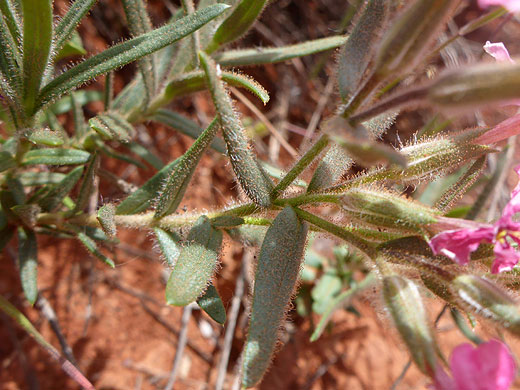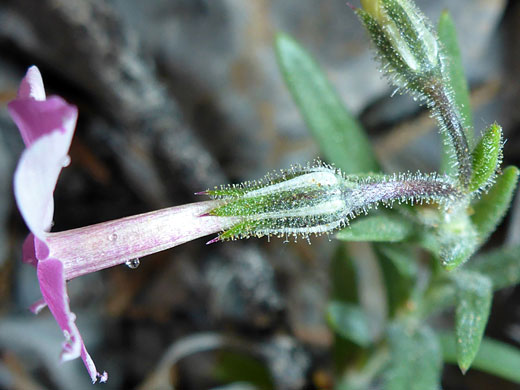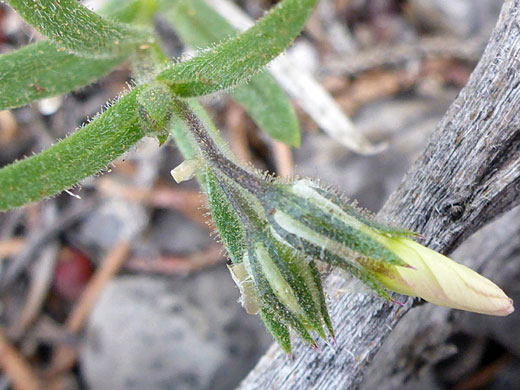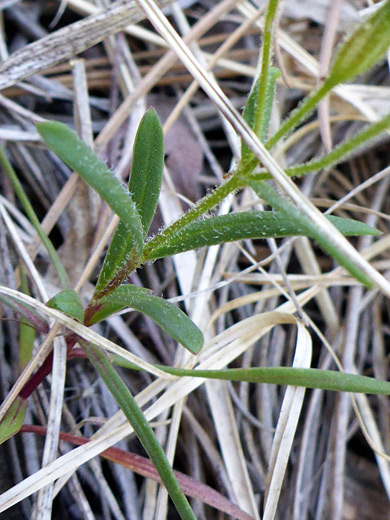Common names:
Cold-desert phlox, pink phlox
Family:
Scientific name:
Phlox stansburyi
Main flower color:
Range:
California, east to Utah and New Mexico, and the Big Bend area of west Texas
Height:
Between 4 and 12 inches
Habitat:
Pinyon-juniper woodland, sagebrush; 4,000 to 9.800 feet
Leaves:
Opposite, linear to lanceolate, up to 1.3 inches long
Season:
April to June
Flowers of phlox stansburyi may be pink or white. The corolla has a narrow tube, up to 1.3 inches long, and the five obovate lobes open to 90 degrees, or are slightly recurved. Five yellow anthers and one style project a very short distance beyond the mouth of the tube. When pink, the corolla lobes are lighter around the base. The corolla lobes are minutely fringed at the tip. The calyx is glandular hairy, and has five narrow, ridged, dull green lobes, pointed at the tip, and separated by light-colored membranes. The slender, low-growing stems branch from the base; they and the leaves have a covering of glandular hairs and longer, non-glandular hairs.
There are two subspecies: ssp stansburyi has slightly shorter corolla tubes (maximum one inch), stems not woody at the base, and tends to grow in clusters, while ssp superba has longer corolla tubes, stems which are woody at the base, and usually grows singly.
There are two subspecies: ssp stansburyi has slightly shorter corolla tubes (maximum one inch), stems not woody at the base, and tends to grow in clusters, while ssp superba has longer corolla tubes, stems which are woody at the base, and usually grows singly.
All Contents © Copyright The American Southwest | Comments and Questions | Contribute | Site Map









